#St. Patrick of Ireland
Text
SAINT OF THE DAY (March 17)
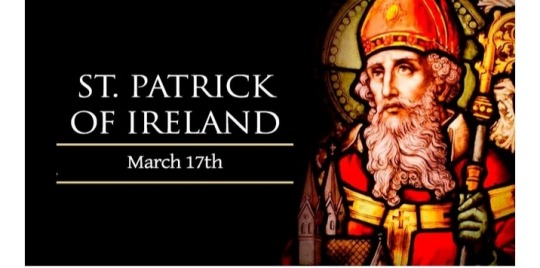
On March 17, Catholics celebrate St. Patrick, the fifth-century bishop and patron of Ireland, whose life of holiness set the example for many of the Church's future saints.
St. Patrick is said to have been born around 389 AD in Britain.
Captured by Irish raiders when he was about 16, St. Patrick was taken as a slave to Ireland where he lived for six years as a shepherd before escaping and returning to his home.
At home, he studied the Christian faith at monastic settlements in Italy and in what is now modern-day France.
He was ordained a deacon around the year 418 AD by the Bishop of Auxerre, France. He was ordained a bishop in 432 AD.
It was around this time that he was assigned to minister to the small, Christian communities in Ireland, who lacked a central authority and were isolated from one another.
When St. Patrick returned to Ireland, he was able to use his knowledge of Irish culture that he gained during his years of captivity.
Using the traditions and symbols of the Celtic people, he explained Christianity in a way that made sense to the Irish and was thus very successful in converting the natives.
The shamrock, which St. Patrick used to explain the Holy Trinity, is a symbol that has become synonymous with Irish Catholic culture.
Although St. Patrick's Day is widely known and celebrated every March the world over, various folklore and legend that surround the saint can make it difficult to determine fact from fiction.
Legends falsely cite him as the man who drove away snakes during his ministry despite the climate and location of Ireland, which have never allowed snakes to inhabit the area.
St. Patrick is most revered not for what he drove away from Ireland, but for what he brought and the foundation he built for the generations of Christians who followed him.
Although not the first missionary to the country, he is widely regarded as the most successful.
The life of sacrifice, prayer and fasting has laid the foundation for the many saints that the small island was home to following his missionary work.
To this day, he continues to be revered as one of the most beloved Saints of Ireland.
In March of 2011, the Irish bishops' conference marked their patron's feast by remembering him as “pioneer in an inhospitable climate.”
As the Church in Ireland faces her own recent difficulties following clerical sex abuse scandals, comfort can be found in the plight of St. Patrick, the bishops said.
They quoted The Confession of St. Patrick, which reads:
“May it never befall me to be separated by my God from his people whom he has won in this most remote land.
I pray God that he gives me perseverance, and that he will deign that I should be a faithful witness for his sake right up to the time of my passing.”
9 notes
·
View notes
Text
TODAY: Palestinian and Irish-American activists marched for Gaza in Rochester, NY on St. Patrick’s Day. Participants proudly displayed banners with Palestinian and Irish flags that read, “Occupation is a crime from Ireland to Palestine.” from BreakThrough News, 17/Mar/2024:
#st patricks day#ireland#palestine#i stand with palestine#free palestine#gaza#free gaza#from the river to the sea palestine will be free#rafah#save rafah#irish solidarity with palestine#new york#protest
2K notes
·
View notes
Text
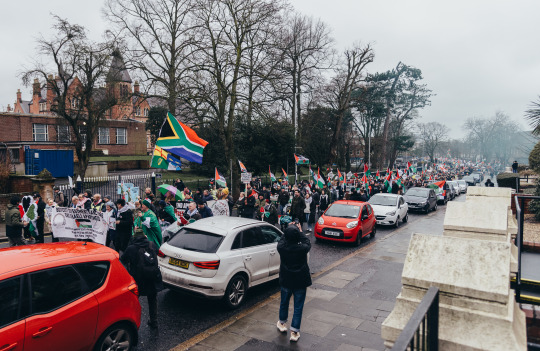


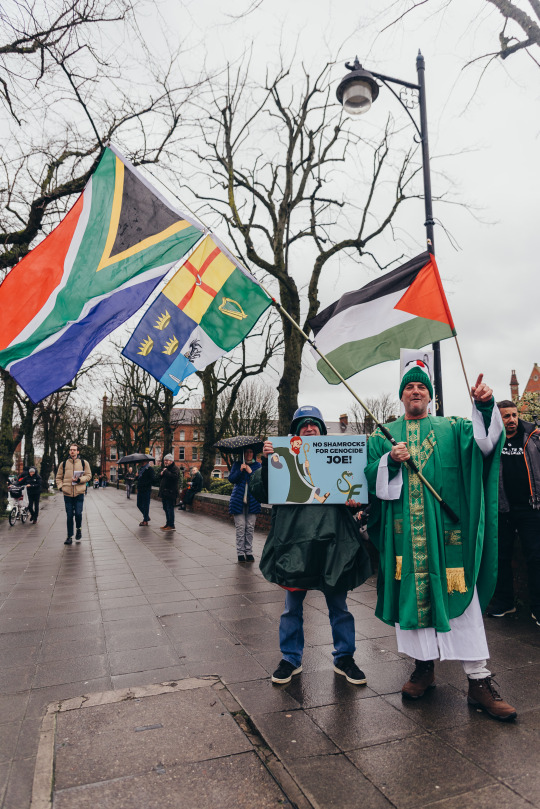
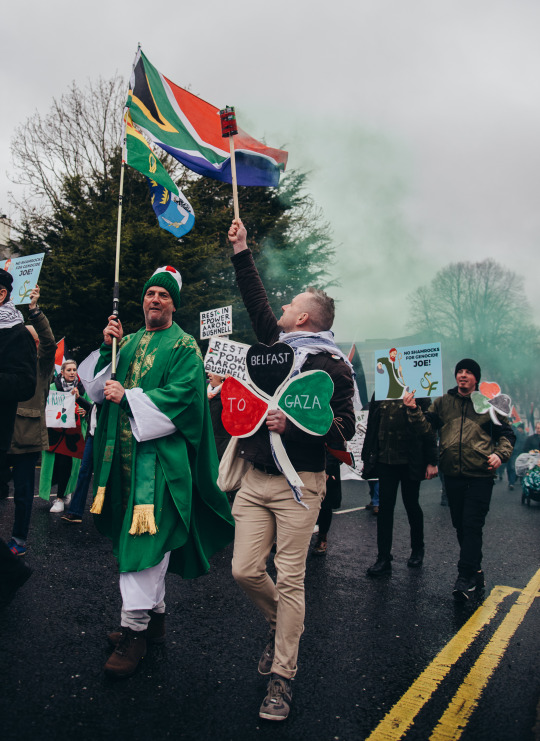


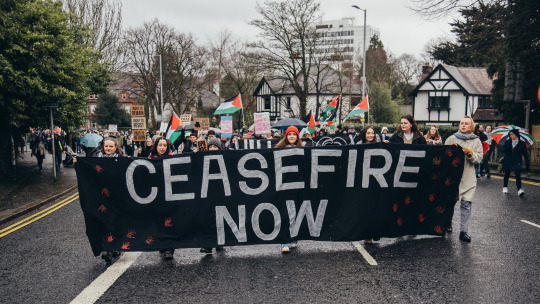




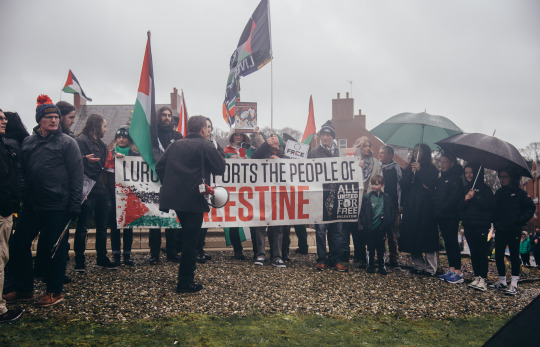
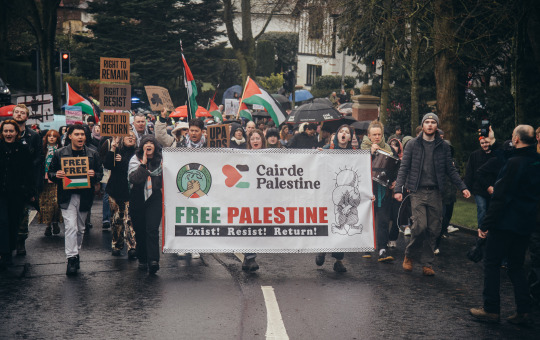

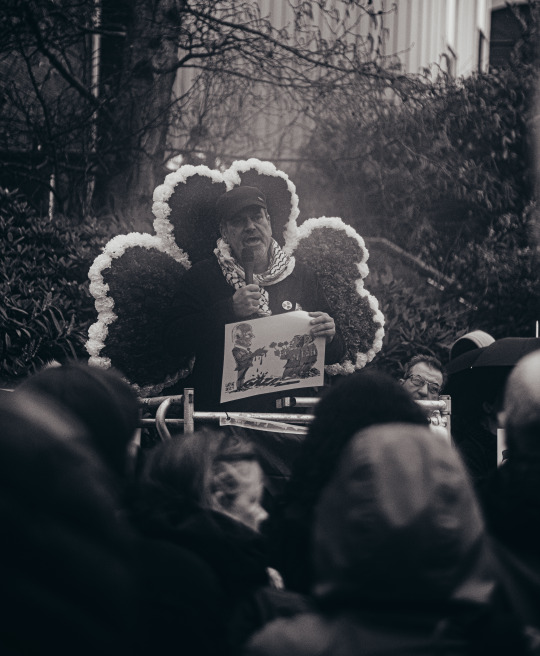

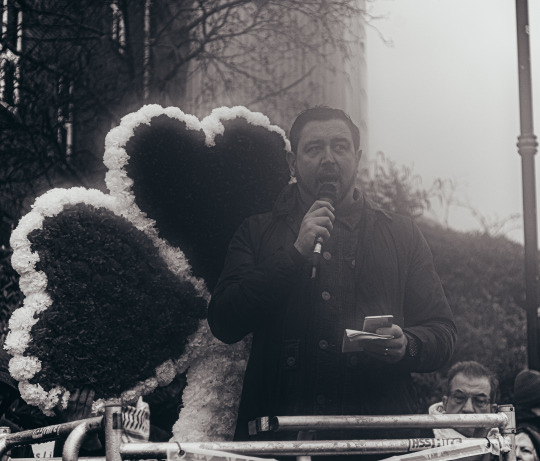
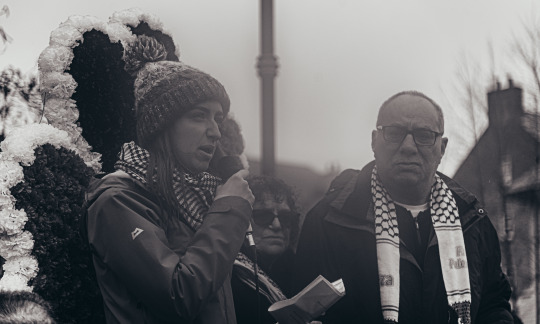
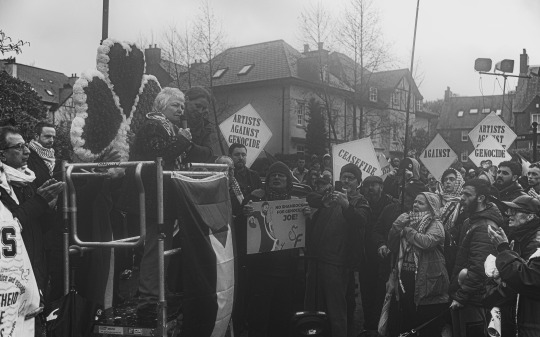

Shamrocks for Palestine
Ireland marches once again in solidarity with Palestine.
As Irish politicians from the largest political parties travel to the White House to celebrate St. Patrick's Day with Joe Biden, protesters from across Northern Ireland gathered to march to the US Consulate in Belfast, calling for a White House boycott and an immediate ceasefire.
When a Councillor from Sinn Féin took the stage she was subjected to intense booing from the crowd throughout her speech for the party's decision to go to the White House with the right wing political parties.
#photography#northern ireland#ireland#palestine#gaza#free palestine#Apologies for the random jump to black and white#the rain fogged the hell out of my camera so this was the only way to salvage those shots#st. patricks day#politics
938 notes
·
View notes
Text
The only appropriate way to spend St. Patrick’s Day is to continue to stand up against the occupation and oppression of all people around the world. 🇵🇸🇮🇪
#free palestine#from the river to the sea palestine will be free#ireland#irish famine#Irish genocide#palestine#palestinian genocide#free gaza#gaza#gaza genocide#anti colonialism#anti colonization#genocide#st patricks day#leftist#leftblr#communist#socialist#communism#socialism#anti capitalist#anti capitalism#leftist politics#human rights#oppression#end occupation#israel is a terrorist state#israeli apartheid
700 notes
·
View notes
Text

Ireland, observed by NASA's Aqua satellite on October 11, 2010.
545 notes
·
View notes
Text
Food on St Patrick's Day (in the USA)...
...is usually Corned Beef & Cabbage, which is the Irish-American version of the original Irish boiled bacon & cabbage, but while the celebratory Irishness is still going strong, try something a bit more authentic.
A nice warm coddle. Not cuddle, coddle, though just as comforting in its own way. (Some sources suggest it's a hangover cure, not that such a thing would ever be necessary at this time of year, oh dear me no.)
Coddle is a stew using potatoes, onions, bacon, sausages, stout-if-desired / stock-if-not, pepper, sage, thyme and Time.
You'll often see it called "Dublin Coddle", but my Mum made Lisburn Coddle lots of times, I've made West Wicklow Coddle more than once, and on one occasion in a Belgian holiday apartment I made Brugsekoddel, which is an OK spelling for something that doesn't exist in any cookbook.
*****
I do remember one amendment I made to Mum's recipe, which met with slight resistance at the time and great appreciation thereafter.
Her coddle was originally cooked on the stove-top, not in the oven, and nothing was pre-cooked. Potatoes were quartered, onions were sliced, bacon was cut into chunks and then everything went into the big iron casserole, then onto the slow back ring, and there it simmered Until Done.
However, the bacon was thick-cut back rashers, and the sausages were pork chipolatas.
Raw, they looked like this:
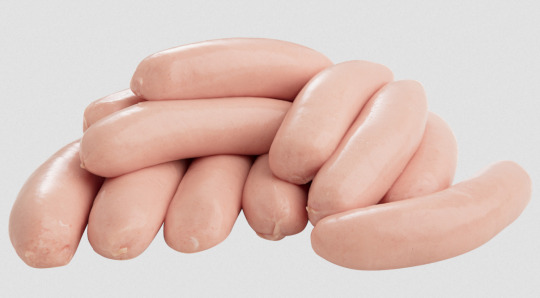
...and the bacon looked like this:
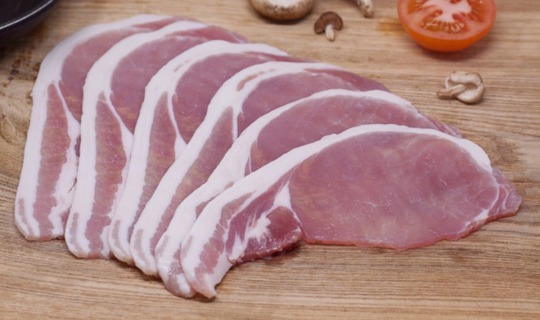
Cooked in the way Mum initially did, they looked pretty much the same afterwards. The sausages didn't change colour. Nor did the bacon.
While everything tasted fine, the meat parts always looked - to me, anyway - somewhat ... less than appealing. "Surgical appliance pink" is the kindest way to put it, and that's all I'm saying. This is apparently "white coddle" and Dubs can get quite defensive about This Is The Way It SHOULD Look.
I'm not a Dub, so I persuaded Mum to fry both the bacon and sausages first, just enough to get a bit of brown on, and wow! Improvement! I remember my Dad nodding in approval but - because he was Wise - not saying anything aloud until Mum gave it the green light as well.
Doing the coddle in the oven, first with lid on then with lid off, came later and met with equal approval. So did using only half of the onion raw and frying the other half lightly golden in the bacon fat.
Nobody quoted from a movie that wouldn't be made for another decade, but there was a definite feeling of...

*****
There are coddle recipes all over the Net: I've made sure that these are from Ireland to avoid the corned-beef-not-boiled-bacon "adjustment" versions which are definitely out there. I've already seen one with Bratwurst. Just wait, it'll be chorizo next.
Oh, hell's teeth, I was right. And from RTE...
Returning to relative normality, here's Donal Skehan's white coddle and his browned coddle with barley (I'm going to try that one).
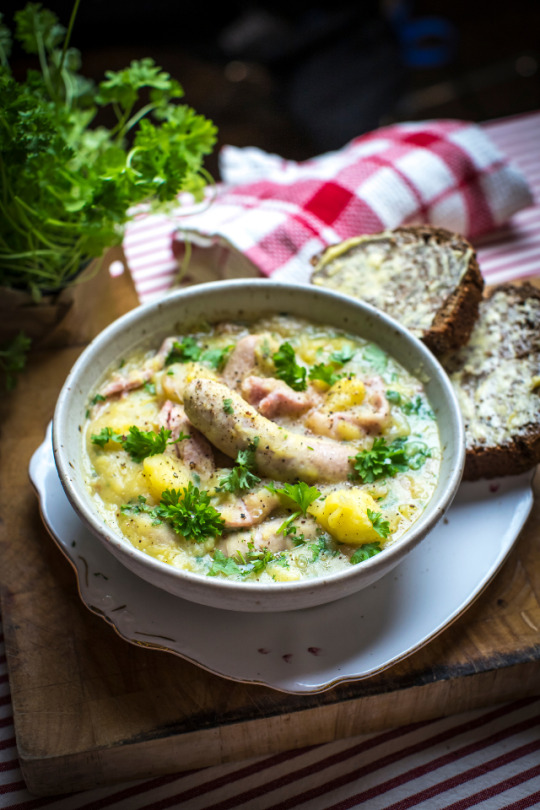

Here's Dairina Allen's Frenchified with US measurements version. (I feel considerably less heretical now.)

And finally (OK, not Irish, but it references a couple of the previous ones and is a VERY comprehensive write-up, so gets a pass) Felicity Cloake's Perfect Dublin Coddle (perfect according to who, exactly...?) in The Guardian.

*****
Returning to the beginning, and how boiled bacon became corned beef (a question which prompted @dduane to start an entire website...!)
The traditional Irish meat animal for those who could afford it was the pig, but when Irish immigrants (even before the Great Famine) arrived in the USA, they often lived in the same urban districts as Jewish immigrants from Eastern Europe.
For fairly obvious reasons pork, bacon and other piggy products were unavailable in those districts, but salt beef was right there and far cheaper than any meat Irish immigrants had ever seen before.
Insist on tradition or eat what was easy to find? There'd have been contest - and do I sometimes wonder a bit if sauerkraut ever came close to replacing cabbage for the same reason.
The pre-Famine Irish palate liked sour tastes: a German (?) visitor to Ireland in the mid-1600s wrote about about what were called "the best-favoured peasantry in Europe", and mentioned that they had "seventy-several sour milks and creams*, and the sourer they be, the better they like them."
* Yogurt? Kefir? Skyr? Gosh...
Corned beef and Kraut as the immigrants' celebratory "Irish" meal for St Patrick's Day? Maybe, maybe not.
Time for "Immigrant Song" (with kittens).
youtube
*****
Corned beef got its name from the size of the salt grains with which the beef was prepared. They were usually bigger than kosher salt, like pinhead oats or even as large as grains of wheat, and their name derived originally from "corned (gun)powder", the large coarse grains used in cannon.
BTW, "corn" has been a generic English term for "grain" for centuries, and "but Europe didn't have corn" is an American mistake assuming the word refers to sweetcorn / maize, which it doesn't.
Lindsey Davis, author of the "Falco" series, had a couple of rants about it and other US-requested "corrections". As she points out, mistakes need corrected but "corn" is not a mistake, just a difference in vocabulary.
*****
In Ancient and Medieval Ireland pig would have included wild boar, the hunting of which was a suitable pastime for warriors and heroes, because Mr Boar took a very dim view of the whole proceeding and wasn't shy about showing it (see "wild boar" in my tags and learn more).
Cattle were for milk, butter, cream and little cattle; also wealth, status, and heroic displays in their theft, defence or recovery. It's no accident that THE great Irish epic is "The Cattle-Raid of Cooley" / Táin Bó Cúailnge (tawn / toyn boh cool-nyah).
Killing a cow for meat was ostentation on a level of lighting cigars with 100-, or even 500-, currency-unit notes. Once it had been cooked and eaten there'd be no more milk, butter, cream or little cattle from that source, so eating beef was showing off And Then Some.
Also, loaning a prize bull to run with someone else's heifers was a sign of great friendship or alliance, while refusing it might be an excuse for enmity or even war. IMO that's what Maeve of Connaught intended all along, picking undiplomatic envoys who would get drunk and shoot their mouths off so the loan was refused and she, insulted, would have an excuse to...
But I digress, as usual. Or again. Or still... :->
*****
For the most part, "pig" mean "domestic porker", and in later periods right up to the Famine, these animals were seldom eaten.
Instead, known as "the gentleman who pays the rent", the family pig ate kitchen scraps and rooted about for other foods, none of which the tenant had to grow or buy for them. These fattened pigs would go to market twice a year, and the money from their sale would literally pay that half-year's rent.
For wealthier (less poor?) farmers, pigs had another advantage. Calves arrived singly, lambs might be a pair, but piglets popped out by the dozen. A sow with (some of) her farrow was even commemorated on the old ha'penny coin...
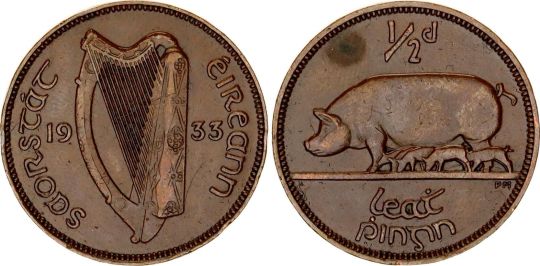
What with bulls, chickens, hares, horses, hounds, pigs, salmon and stags, the pre-decimal Irish coinage is a good inspiration for some sort of fantasy currency.
But that's another post, for another day.
#food and drink#St Patrick's Day#Irish cuisine#Dublin coddle#corned beef or boiled bacon#pigs and cattle in Ireland#The Cattle Raid of Cooley#Youtube
556 notes
·
View notes
Text
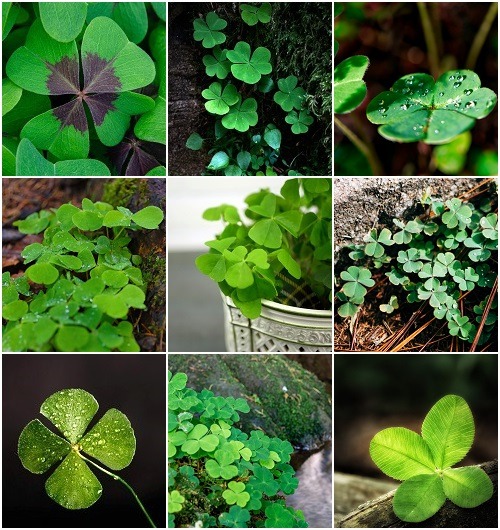
Nature: Clovers and Shamrocks
May your blessings outnumber
The shamrocks that grow,
And may trouble avoid you
Wherever you go.
#four leaf clover#clover#shamrock#shamrocks#irish#ireland#saint patricks day#st patricks day#st. patricks day#saint patrick's day#Saint Patrick's#st paddys day#st paddy's day#Saint Paddy's Day#St. Paddy's#St. Paddy's day#Irish aesthetic#Irish moodboard#Nature#Plants#plant aesthetic#plant moodboard#nature aesthetic#nature moodboard#moodboard#aesthetic#green clover#green aesthetic#100 notes
460 notes
·
View notes
Text

429 notes
·
View notes
Text

some weekend
378 notes
·
View notes
Text

We've been furious here on the island regarding almost all the politicians leaving to pander to a genocidal administration.
I humbly request that when you see those fools shaming us abroad to remember that they have expressly ignored the will of the people. We marched in our hundreds of thousands for weeks and still they ignore our every request.
Ireland stands with Palestine always, those stooges from the Dáil do not represent us and will be removed in the upcoming General Election. They needed their last free holiday on the taxpayer given they'll never have power again.
If you are to engage in the festivities this weekend I request you utilise the black shamrock, and not the green. That is what we're doing here.
Saoirse don Phalaistín. 🇵🇸✊🇮🇪
#free gaza#free palestine#gaza strip#irish solidarity with palestine#palestine#gaza#news on gaza#al jazeera#boycott israel#israel#Ireland#St Patrick's Day#SDLP#Claire Hanna#USA#Paddy's Day#It's Paddy and not Patty by the way. It's never been Patty.
369 notes
·
View notes
Text

🌸 Kawaii Shop 🌸
#st patricks day#st paddys day#st pattys day#ireland#irish#sanrio#sanriocore#sanrio blog#sanrio aesthetic#my melody#kuromi#stationary#kawaii#kawaiicore#kawaii blog#kawaii aesthetic#cutecore#cute blog#cute aesthe
233 notes
·
View notes
Text
SAINT OF THE DAY (March 17)

On March 17, Catholics celebrate St. Patrick, the fifth century bishop and patron of Ireland, whose life of holiness set the example for many of the Church's future saints.
St. Patrick is said to have been born around 389 AD in Britain.
Captured by Irish raiders when he was about 16, Patrick was taken as a slave to Ireland where he lived for six years as a shepherd before escaping and returning to his home.
Patrick recounts that he had a vision a few years after returning home:
I saw a man coming, as it were from Ireland. His name was Victoricus. He carried many letters, and he gave me one of them.
I read the heading: "The Voice of the Irish."
As I began the letter, I imagined in that moment that I heard the voice of those very people who were near the wood of Foclut, which is beside the western sea—and they cried out, as with one voice: "We appeal to you, holy servant boy, to come and walk among us."
At home, he studied the Christian faith at monastic settlements in Italy and in what is now modern-day France.
He was ordained a deacon by the Bishop of Auxerre (France) around the year 418 AD and ordained a bishop in 432 AD.
It was around this time that he was assigned to minister to the small Christian communities in Ireland who lacked a central authority and were isolated from one another.
When St. Patrick returned to Ireland, he was able to use his knowledge of Irish culture that he gained during his years of captivity.
Using the traditions and symbols of the Celtic people, he explained Christianity in a way that made sense to the Irish and was thus very successful in converting the natives.
The shamrock, which St. Patrick used to explain the Holy Trinity, is a symbol that has become synonymous with Irish Catholic culture.
Although St. Patrick's Day is widely known and celebrated every March the world over, various folklore and legend that surround the saint can make it difficult to determine fact from fiction.
Legends falsely cite him as the man who drove away snakes during his ministry despite the climate and location of Ireland, which have never allowed snakes to inhabit the area.
St. Patrick is most revered not for what he drove away from Ireland but for what he brought and the foundation he built for the generations of Christians who followed him.
Although not the first missionary to the country, he is widely regarded as the most successful.
The life of sacrifice, prayer and fasting has laid the foundation for the many saints that the small island was home to following his missionary work.
To this day, he continues to be revered as one of the most beloved saints of Ireland. He was also known as the "Apostle of Ireland."
In March 2011, the Irish bishops' conference marked their patron's feast by remembering him as “pioneer in an inhospitable climate.”
"As the Church in Ireland faces her own recent difficulties following clerical sex abuse scandals, comfort can be found in the plight of St. Patrick," the bishops said.
They quoted The Confession of St. Patrick, which reads:
“May it never befall me to be separated by my God from his people whom he has won in this most remote land. I pray God that he gives me perseverance and that he will deign that I should be a faithful witness for his sake right up to the time of my passing.”
2 notes
·
View notes
Text

St. Patrick’s Day Is Loading
166 notes
·
View notes
Text
Demand that Sinn Féin boycott Biden's Saint Patrick's Day celebrations in solidarity with Palestine
#free palestine#palestine#gaza#israel#gaza strip#current events#free free palestine#from the river to the sea palestine will be free#jerusalem#free gaza#ireland#Sinn Féin#joe biden#biden#genocide joe#st. patricks day
163 notes
·
View notes
Photo

Tree in Muckross Friary - Ireland by Kai Mechel
#medieval mood#abbey#ancient tree#gothic architecture#yew tree#my upload#silvaris#ireland#irish#st patrick's day#castle#stone#building#medieval#ancient#ruins
843 notes
·
View notes
Text
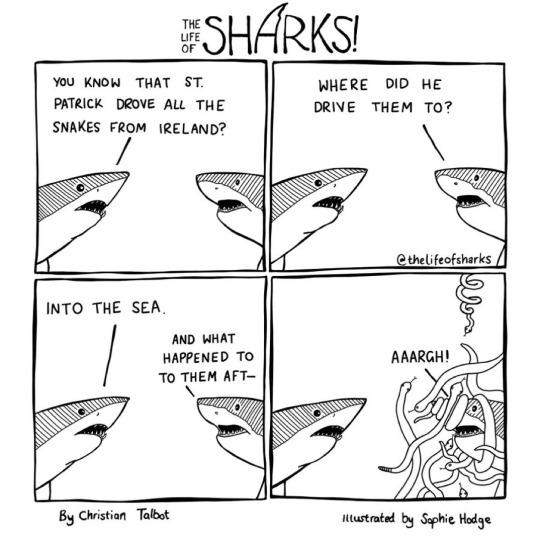
887 notes
·
View notes